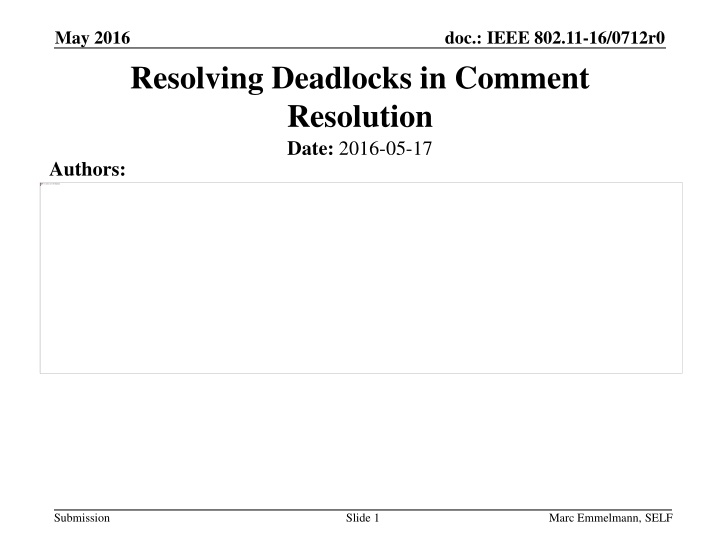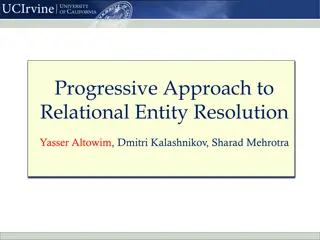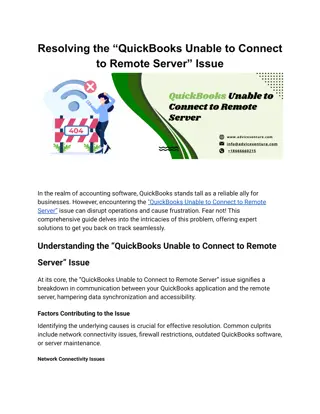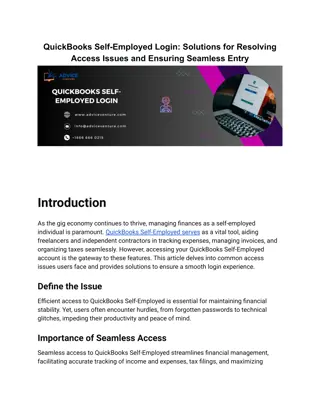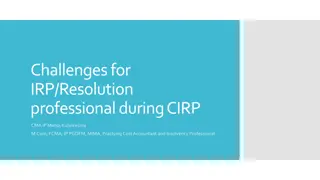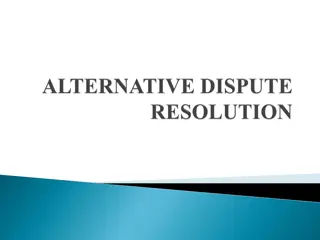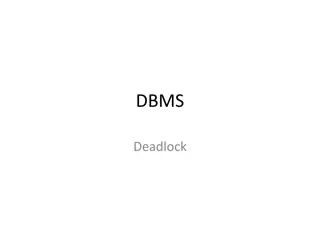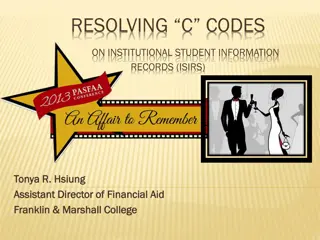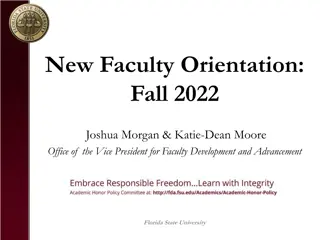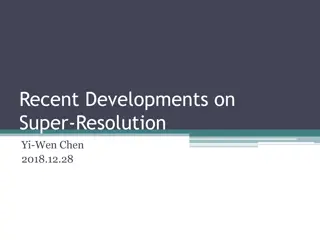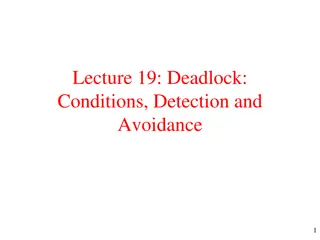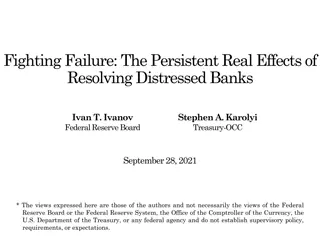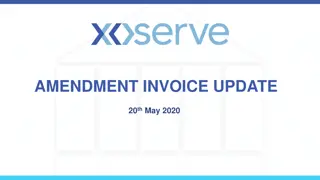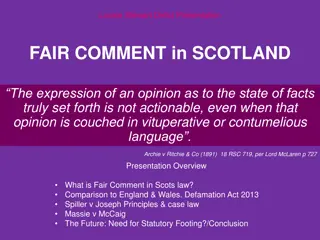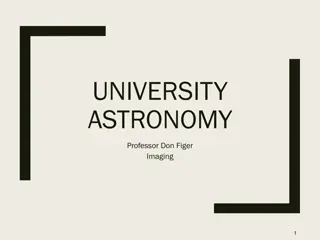Resolving Deadlocks in Comment Resolution
This submission discusses procedural means to address potential deadlocks in the TGai CRC comment resolution process, focusing on the responsibilities and challenges faced by the Comment Resolution Committee. It highlights the importance of achieving consensus and quality in responses to comments during the sponsor ballot phase of IEEE 802.11-16/0712r0.
Download Presentation

Please find below an Image/Link to download the presentation.
The content on the website is provided AS IS for your information and personal use only. It may not be sold, licensed, or shared on other websites without obtaining consent from the author.If you encounter any issues during the download, it is possible that the publisher has removed the file from their server.
You are allowed to download the files provided on this website for personal or commercial use, subject to the condition that they are used lawfully. All files are the property of their respective owners.
The content on the website is provided AS IS for your information and personal use only. It may not be sold, licensed, or shared on other websites without obtaining consent from the author.
E N D
Presentation Transcript
May 2016 doc.: IEEE 802.11-16/0712r0 Resolving Deadlocks in Comment Resolution Date: 2016-05-17 Authors: Submission Slide 1 Marc Emmelmann, SELF
May 2016 doc.: IEEE 802.11-16/0712r0 Abstract The submission presents procedural means on how to procedurally address the potential deadlocks in the TGai CRC comment resolution process. This submission as been reviewed by the 802.11 Chair. Submission Slide 2 Marc Emmelmann, SELF
May 2016 doc.: IEEE 802.11-16/0712r0 Comment resolution in Sponsor Ballot TGai is in Sponsor Ballot Responding to comments (comment resolution) is conducted by the Comment Resolution Committee (CRC) The CRC Should consider to reduce the number of no-voters in the voter pool Has to respond (i.e., address) all comments Should aim at completing a ballot with a draft of high quality that meets the approval of most (>75%, typically 95%) of its voters in a timely fashion (1) Note the tension frequently cannot satisfy all the commenters and complete in a timely fashion (1) The CRC is formed by the sponsor Paul Nikolich as 802 Chair delegates this responsibility to the 802.11 Chair, i.e. Adrian Stephens. In general, the 802.11 Chair appoints all 802.11 voting member to be in the CRC and assigns the task group chairs to lead the CRC (1) Adrian Stephens: Comment Resolution Tutorial, 11-13/230r2. Submission Slide 3 Marc Emmelmann, SELF
May 2016 Controversial topics in TGai sponsor ballot comment resolution doc.: IEEE 802.11-16/0712r0 Topics that did not find a majority for providing a technical comment resolution: Security (use of AES-GCM vs. AES-SIV) State machine (adding additional state 5 ) Motions to approve comment resolutions for above topics failed, see (1) and (2) (1) See motion #331 in 11-13/1186r40 (2) See motion #332 in 11-13/1186r40 Submission Slide 4 Marc Emmelmann, SELF
May 2016 doc.: IEEE 802.11-16/0712r0 Way forward Find consensus Find consensus during the session Cannot consider the same motion in the same session (which is the week of a face-to-face meeting or one meeting of the CRC either in person or as a telco) new motion has to be substantially different; Procedural decision by the Chair A motion on a new proposal that reflects consensus could be such a substantially different motion; e.g., one possible consensus solution is to have multiple mechanisms. A motion to approve a response stating that the CRC could not agree on any (other) resolution could also such a substantially different motion. Finding consensus, i.e., >75% support, is the preferred way forward Submission Slide 5 Marc Emmelmann, SELF
May 2016 doc.: IEEE 802.11-16/0712r0 Way forward Increase probability that all CRC members attend Assure that more members of the CRC get involved in the discussion Continue at each upcoming CRC session (i.e., at each telephone conference) to obtain a majority for a comment resolution If deadlock remains, schedule a presentation slot for a 802.11 plenary at the upcoming face-to-face meeting Submission Slide 6 Marc Emmelmann, SELF
May 2016 doc.: IEEE 802.11-16/0712r0 Way forward Agree to disagree Rejected. The CRC could not reach consensus on the changes necessary to address the comment this comment. Formally a procedural rejection (1) Context: The TG cannot reach a consensus on any other resolution. The CRC has considered one or more other resolutions that attempt to satisfy the comment, but no such resolution has received 75% approval. It should be recorded in the minutes what other resolution(s) have been considered, together with the results of any straw polls or motions on those alternative solutions so that the commenter can understand that this solution was used after due diligence to satisfy the comment. Such a statement of fact about the process could be viewed as procedural because it has no element of technical judgment in it. (1) Adrian Stephens: Comment Resolution Tutorial, 11-13/230r2. Submission Slide 7 Marc Emmelmann, SELF
May 2016 doc.: IEEE 802.11-16/0712r0 Next Steps of TGai CRC during this face- to-face meeting Ask if there are any potential comment resolutions for the two controversial topics Has progress on a joint / harmonized resolution been achieved If consensus could not be achieved, discuss if procedural rejection of comments should be considered. Related to TGai timeline in general Impact on ordering of amendments (order of 11ah and 11ai) Check at each of the following TGai slots this week if there are new comment resolutions to review Announce on the reflector that the topics including any potential motions if applicable will be revisited on Thursday AM2. Slide 8 Submission Marc Emmelmann, SELF
May 2016 doc.: IEEE 802.11-16/0712r0 References Submission Slide 9 Marc Emmelmann, SELF
